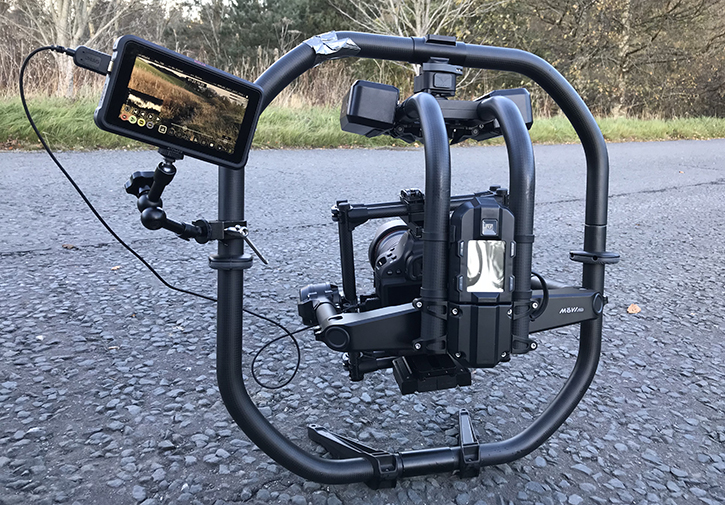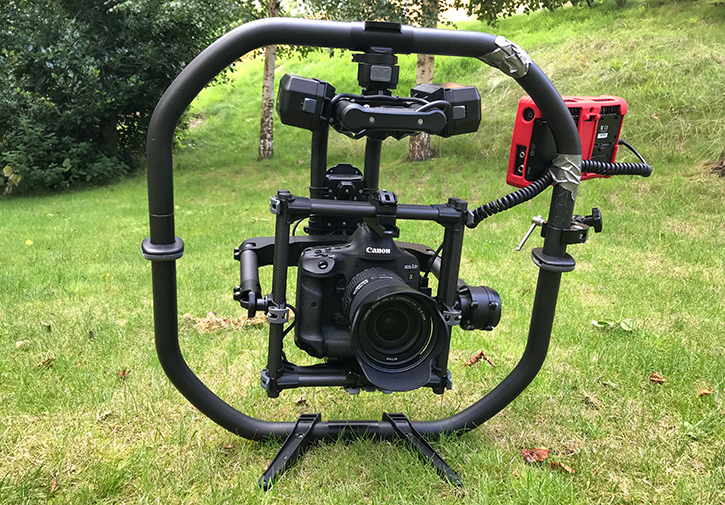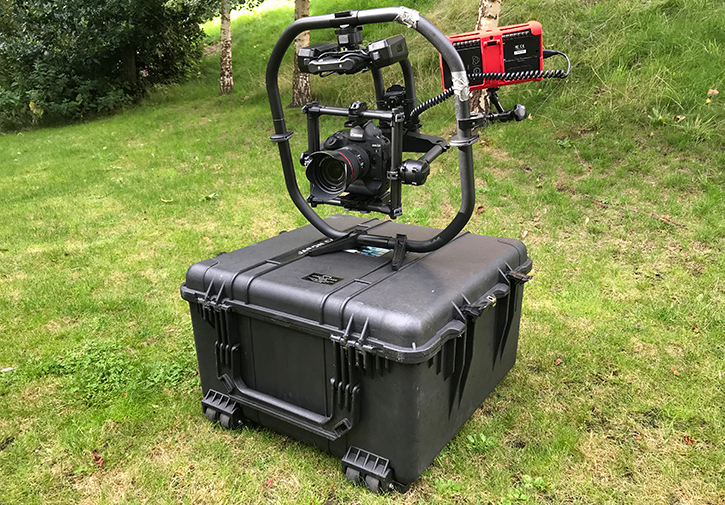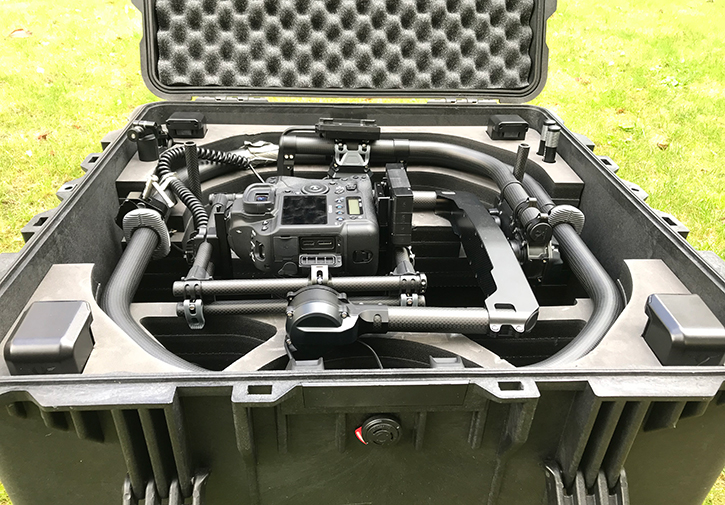- Filming equipment
Review of the Freefly Systems MōVI Pro 3 axis gimbal
By - Richard - 24th August 2019
Three axis gimbals are now as ubiquitous as large sensor cameras. However, we only started shooting with a gimbal three years ago. Our first port of call was the DJI Ronin M.
It took us quite a while to fine tune the Ronin M to get the desired results, but we slowly got the hang of things. With the aid of and the gimbal ‘ninja walk’, ultimately we were pleased with footage we got from it.
The size of DJI Ronin M lends itself well to smaller cameras. We had an effective set up for single operators using the Ronin M with the versatile Canon XC10 camera. This allowed us to shoot 4K footage in Canon log and for a while this suited our needs just fine.
There were however three main issues with the Ronin M. Firstly, not being able to put the gimbal down without carrying the tuning stand became tiresome very quickly. Secondly, travelling with the gimbal was a huge pain and valuable time on set would be spent assembling the gimbal from scratch. Thirdly, as time passed and our productions became more elaborate, we wanted to use bigger and heavier cameras – cameras with interchangeable lenses – in particular the Canon 1 DX mark 2.
It was clear that we needed to upgrade our gimbal. Filmmaker Philip Bloom has long been an advocate of Freefly’s MōVI gimbals and the extensive features of the MōVI Pro looked very tempting. Recently, we took the plunge and made the investment in the MōVI Pro. We haven’t looked back.

As single operators of the MōVI Pro, we are barely scratching the surface of what this gimbal can do. But for what we need it to do, it does it flawlessly. This gimbal has upped our game substantially.
Balancing the [chunky] Canon 1DX Mark 2 on the MōVI Pro was comparatively easy. Once balanced, with a tap of a button, it’s ready to go. This also makes changing lens and rebalancing a breeze.
Straight out of the bat, this gimbal is smooth and steady. We achieved exceptional results with the MōVI Pro the very first time we used it – results that we had tried (but largely failed) to perfect over three years of using the DJI Ronin M. The MōVI Pro just works.
Combining the MōVI Pro with the dual pixel CMOS autofocus capabilities of the Canon 1DX Mark 2 allows us to create shots that we could only dream about a few years ago. We now shoot everything on the gimbal in 4K 50p and our clients are delighted. Slow motion, cinematic, 4K gimbal shots with a shallow depth of field are a reality with this set up. We love it!
We had been using the Atomos Ninja Assassin external recorder as a monitor when shooting with the MōVI Pro. This works well, but the Ninja Assassin was quite heavy. We recently invested in the smaller and lighter Atomos Ninja V shortly to fine tune our gimbal set up.

Building a gimbal whilst on set is never fun and we were keen to ensure that we had minimal set up time when using the MōVI Pro. We invested in the MōVI Pro case from Jason Cases. It’s huge, and it’s heavy, but we can now rock up on set and have our gimbal ready to shoot in less than two minutes. Travelling with the camera attached to the gimbal inside the case is achievable and allows you to balance the camera on the gimbal before your shoot.


We have also been impressed with the support from Freefly. All of the tools you need to assemble the gimbal and attach your camera are provided with the MōVI Pro. However, we snapped a supplied screwdriver within two minutes of using it… We fired off a quick email to Freefly and they responded within 10 minutes. They helped answer some questions we had about the initial set up and promised to send out a replacement screwdriver. The replacement screwdriver turned up promptly along with a FreeFly baseball cap and other useful goodies. Nice touch!
All in all we can see ourselves shooting with this gimbal for many years to come. It has become an essential piece of kit for almost every production.
Pros:
Simple to set up.
Ability to put it down in between shots.
Battery life is decent and batteries are hot swappable.
Cons:
Heavy once fully rigged.
Expensive.
Very big to transport once fully assembled.



